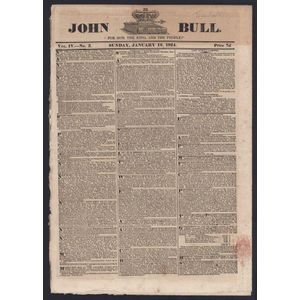French Antique Sampler: Ten Commandments, 1737
You must be a subscriber, and be logged in to view price and dealer details.
Subscribe Now to view actual auction price for this item
When you subscribe, you have the option of setting the currency in which to display prices to $Au, $US, $NZ or Stg.
- Crewel Work - Crewel work is a form of embroidery that uses a fine, two-ply wool yarn to create designs on a fabric ground. The yarn is typically stitched using a needle to create a variety of textures, patterns, and designs. Crewel work is known for its delicate and intricate designs, which often feature floral and foliate patterns.
It is a traditional form of embroidery that dates back to the 16th century and was particularly popular in England and colonial America during the 17th and 18th centuries. Crewel work is often used to decorate clothing, linens, and upholstery. It can be done by hand or by using a crewel embroidery machine. - Cross Stitch - Cross stitch is a form of embroidery that involves creating a pattern or design by sewing X-shaped stitches onto fabric. The stitches are typically made using a needle and thread, and are made in a grid pattern, with each X-shaped stitch crossing over one or more fabric threads. The stitches are usually made with a single thread of embroidery floss, and the thread is passed over one fabric thread and under the next, creating the X-shape.
Cross stitch is one of the oldest forms of embroidery and has been used for centuries to create decorative patterns and designs on clothing, linens, and other fabrics. The technique is simple and easy to learn, making it a popular hobby for people of all ages and skill levels. Cross stitch patterns can range from simple geometric designs to more complex, detailed images such as landscapes, portraits, and characters.
Cross stitch is also used in the production of samplers, a traditional form of embroidery that features a variety of different stitches and patterns produced as a way to practice and demonstrate needlework skills. - Circa - A Latin term meaning 'about', often used in the antique trade to give an approximate date for the piece, usually considered to be five years on either side of the circa year. Thus, circa 1900 means the piece was made about 1900, probably between 1895 and 1905. The expression is sometimes abbreviated to c.1900.
- Putto / Putti / Amorino / Amorini - A putto (plural: putti) or amerino (plural: amerini) is a cherub or cupid frequently appearing in both mythological and religious paintings and sculpture, especially of the Renaissance and Baroque periods and later used as a decorative element in the design of furniture, ceramics, statuary etc. They are usually depicted as chubby males, or of indeterminate gender, often with wings. Their depiction may represent an association with love, heaven, peace or prosperity.
This item has been included into following indexes:
Visually similar items

First Melbourne Cup: 'The Argus' newspapers (3) for Thursday Oct.31 1861, Friday Nov.1 1861 & Saturday Nov.2 1861, the first including the acceptances for the first Melbourne Cup, including 'Mr.De Mestre's b h Archer, 5 yrs, 9st. 7 lb.', and the full progr

John Bull [Newspaper] January 18, 1824 [London, 8pp] Includes a full page report titled 'The Tread Mill' being a comprehensive coverage of the evidence from prisoners who had been punished on this instrument of torture, as presented to the official investi

Bali, Cepuk, cotton, natural dyes, weft ikat. Background of deep red, with a geometric weft ikat design set within a framing structure of stripes, bands and ikat sections. The flower pattern in the centre is made up of vertical rows of lozenges, 113 x 79 c

Early 19th century sampler worked in cotton by Jane Furnish 13 years of age 1801
